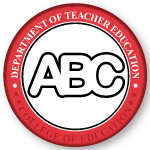Document Type
Article
Publication Date
Fall 2010
Journal Title
College Teaching
Volume
58
Issue
4
First Page
136
Last Page
140
Abstract
Planning time for giving students effective feedback is an important and challenging aspect of the teaching and learning process. In our article we describe and analyze how we engage students as partners in providing formative feedback in time for students to modify their own thinking or behavior to improve learning. We have found ways to provide formative feedback more frequently and to involve students in providing effective formative feedback to each other. The four techniques we describe are the following: a) three-color group quiz with feedback on product, process, and progress; b) midterm student conferencing; c) shared revision of student generated questions and statements; and d) timely feedback using collaborative assignment blogs. These techniques give feedback in time for revisions to occur, provide scaffolding for learners, inform instruction, and most importantly, involve students as partners in assessment. These pedagogical strategies show that the resulting benefits of improved instruction, enhanced student learning, and better student products are worth the time and effort and contribute to a productive classroom climate where the focus is on learning more than on grading. Formative feedback involving students as partners is a key strategy to enhance the teaching and learning process.
Recommended Citation
Fluckiger, Jarene; Tixier y Vigil, Yvonne; Pasco, Rebecca J.; and Danielson, Kathy Everts, "Formative Feedback: Involving Students as Partners in Assessment to Enhance Learning" (2010). Teacher Education Faculty Publications. 64.
https://digitalcommons.unomaha.edu/tedfacpub/64


Comments
This is an Author's Accepted Manuscript of an article published in Fluckiger, J., Vigil, Y. T., Pasco, R., & Danielson, K. (2010). Formative Feedback: Involving Students as Partners in Assessment to Enhance Learning. College Teaching, 58, 4, 136-140. © 2010 Taylor & Francis, available online at: http://www.tandfonline.com/doi/full/10.1080/87567555.2010.484031#.Ui9FC8W7H94.